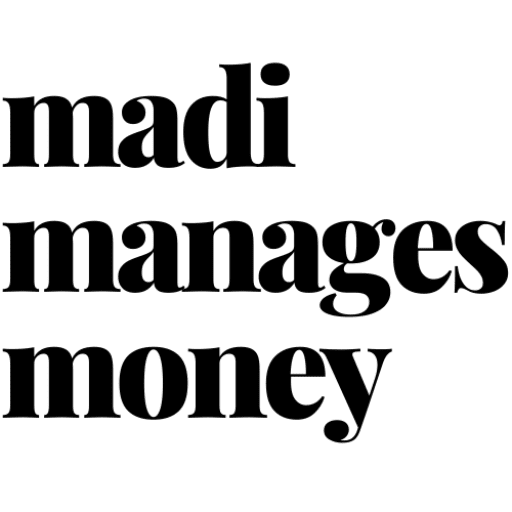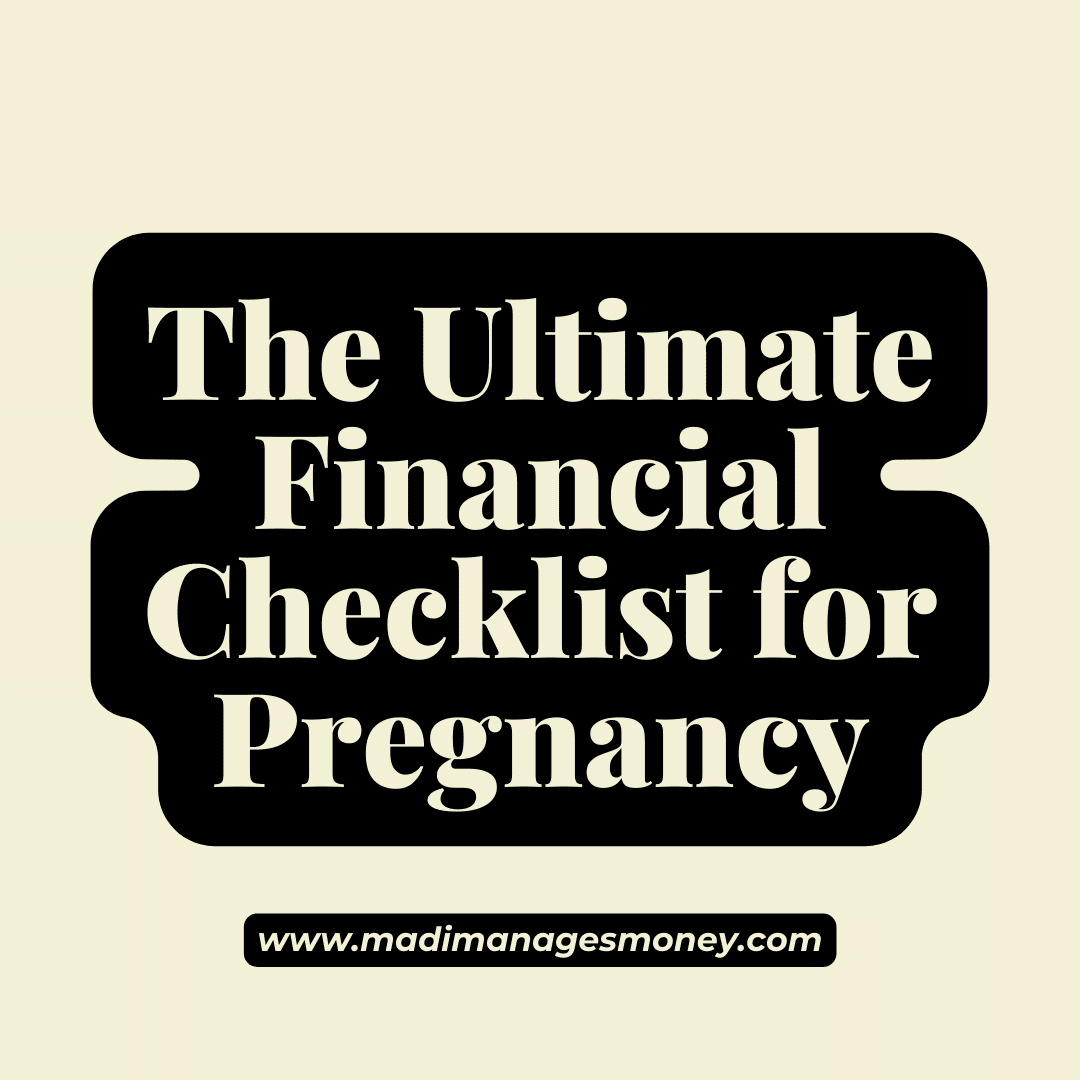I’m a Certified Financial Planner and a mom. Here’s the ultimate financial checklist for pregnancy.
You’re having a baby! 🤗 Financially, now what? 😬
If your nesting process resembles mine, you’re a pregnant version of the Terminator right now. There’s no better time to knock out, low-key, the most impactful preparation you’ll make for your baby’s arrival: getting your financial house in order.
Get insurance pre-clearance.
You have nine months of prenatal care followed by the *main event.*
To minimize insurance surprises, call your insurance company to pre-clear any care you anticipate needing from your provider, including your labor and delivery.
At one of your first prenatal doctor appointments, you’ll get a list of tests and scans to expect. You’re essentially running this list past your insurance company to see what’s covered.
Double-check that where you plan to deliver is indeed in-network. Your health insurance’s in-network out-of-pocket max is likely MUCH lower than your out-of-network max. You may also want to confirm with your insurance company how many days in the hospital are covered.
In my case, my provider billed all of my prenatal care and delivery expenses in two lump sums after my daughter arrived. (One bill mysteriously appeared over six months after I delivered her.🤔)
I’m literally sweating imagining myself opening these statements without pre-clearing my care first.
Order a breast pump through insurance.
Most insurance companies cover this expense after your doctor writes you a “prescription” for one. I did this about midway through my pregnancy.
Pumps are easily a $200 expense if purchased out-of-pocket. Even if you plan to breastfeed – trust me – you’ll want one of these on hand.
Apply for leave at work.
Whether it’s maternity, parental leave, or both, paid leave is something you’ll apply for manually. Contact your company’s HR department to thoroughly explore your options.
If you don’t have paid leave available to you, FMLA might be an option. FMLA is a government regulation that entitles eligible employees to up to 12 weeks of unpaid, job-protected leave.
In my case, I was able to take both maternity and parental leave. This entailed applying for two separate and sequential leaves.
My approach to communicating my time off with my employer was to be transparent but take no prisoners. I communicated (unapologetically) when and how much time I was taking, which was the full amount.
Lastly, I’d recommend consulting with other new moms at your company. In fact, the only reason I even realized I could take advantage of both parental and maternity leave is another mom told me.
Identify an in-network pediatrician.
Your baby’s first doctor appointment will take place during their first few days home with you. You will be running late. You’ll want to have an in-network doctor on the ready.
If you’re not sure where to start, ask your prenatal care provider for recommendations.
Cushion your emergency fund.
Under normal circumstances, I recommend keeping 3-6 months worth of living expenses in a checking or savings account.
Knowing that you have a joyful but chaotic 🐣 major life event approaching, I’d recommend holding closer to six months. This will give you financial peace of mind if baby’s arrival is accompanied by surprises.
If you don’t really have an emergency fund yet, now’s the time to get one started. It’s not necessarily a separate fund. Instead, think of it as extra cash that you hold in your existing bank account, just in case.
I had a fairly routine pregnancy and vaginal delivery, and I still spent over $3,600 out-of-pocket on prenatal care and delivery costs. Without insurance, I would have been charged closer to $42,000. (Here’s a full breakdown.)
Pay down credit card debt.
This might feel like generic financial advice, but it’s a critical step so you can level up and take the next few. Even if you can’t immediately pay down your debt, create a timeline and a plan to do so.
If you’re caught deciding between building your emergency fund or paying down credit card debt, I’d err on the side of paying the high-interest debt – even if it means having a smaller cash cushion.
Create your monthly budget.
Quantify what you’re regularly spending today by adding up your expenses for each of the past several months. You can download my budget template here to get started.
Twelve months is an ideal look-back period, but a shorter timeframe works, too. Just make sure it’s a fair representation of your situation.
Adjust this monthly number upwards based on what you expect to spend on your baby. As a starting point, not including daycare, my family spends an extra ~$380 per month on our daughter.
This captures stuff like healthcare, baby gear, diapers, and food. (Here’s our full budget as a family of 3.)
Daycare alone will be your biggest line item. Had our daughter been in daycare for the full year, it would have cost us about $21,000, or $1,750 a month.
Fill your registry with major purchases.
Put major purchases on and leave smaller items (like receiving blankets and onesies) off of your registry.
Friends and family are wonderful at joining forces to share the cost of big-ticket gifts. As far as the smaller items, loved ones are going to get you whatever they want to get anyway.
Let them shop for something special that adds their own touch. Plus, other moms have your back and love sharing their favorite gear and hacks.
Purchase term life insurance.
Term life insurance is an affordable way to provide for your children should you unexpectedly pass away. (I’d be reeling 😩 if I were pregnant and reading this, so I’m sorry if I’m sending you!)
These policies are designed to make up for lost years of earnings, covering the expenses of raising a child, like housing, education, and childcare.
It works a lot like paying for a subscription. Usually, for premiums that cost less than a streaming service, your family has access to a payout in the event that you die.
Stop paying premiums, though, and the policy goes away. The payments that you’re making aren’t “stored” anywhere – they’re purely an expense – which is partly what makes term insurance so affordable.
I’ve had positive experiences getting quotes with Policygenius for several different types of insurance. It’s an online insurance marketplace that can source quotes from several carriers. In fact, here are all of the details of my own coverage.
Underwriting for term insurance is a little more complicated while pregnant, so it’s ideal to have a policy in place ahead of time. The sooner you lock one in place, the better.
Apply for baby’s birth certificate & social security card.
This happens at the hospital. Someone will visit you to initiate the process.
To open financial accounts or make your baby a beneficiary, you’ll need these.
Add baby to your health insurance.
Within 30 days of their arrival, add your new baby to your health insurance. This doesn’t happen automatically!
Yes, you got me – this technically occurs after birth, but it’s critical enough to earn a spot on ALL of the checklists.
If you don’t add your baby, any labor and delivery costs associated with them (which will be roughly half of your total costs) could be denied by your insurance.
Related Post: The Worst Time of Year to Have a Baby (Financially)
Things you don’t need.
Nowhere on this financial checklist will you find a certain amount of money required to have a baby.
Does more money make things easier? Undeniably, yes, but don’t unduly stress if you’re pregnant and feeling financially unprepared.
No one is ever completely ready for parenthood. Plus, women have been successfully birthing babies and raising them with only the resources at hand since the beginning of time.
By checking these items off your list, you’ll already be ahead of the game.
Next week’s post will be a financial checklist for your baby’s first year of life. We’ll explore things like investing for college and creating a will.
Stay calm & nest on!🤰🏽
Related Post: It’s Too Early to Open a Bank Account for Your Kids
The opinions voiced in this material are for general information only and are not intended to provide specific advice or recommendations for any individual. To determine which investments may be appropriate for you, consult with your financial advisor.

